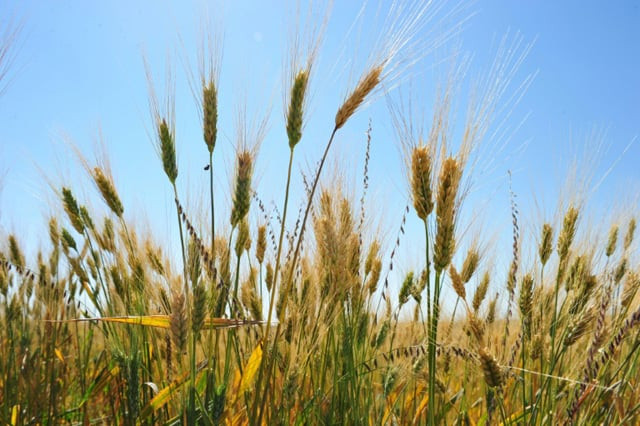IRSA sees 18% water shortage in Kharif sowing season
Insists, however, provinces will get water according to their demand

PHOTO: AFP
Briefing media after a meeting of the advisory committee, Irsa spokesperson Khalid Rana said 110 million acre feet (maf) of water would be available in the Kharif season, of which 67 maf would be utilised to irrigate agriculture fields.
Boosting agriculture: Experts call for collaborative efforts
Of this, Punjab will receive 33.23 maf and Sindh will get 30.39 maf. The share of Khyber-Pakhtunkhwa (K-P) will be 0.82 maf whereas Balochistan will receive 2.6 maf.
Representatives of all provinces were present in the advisory committee meeting that was held to finalise water shares of provinces for the sowing season.
A couple of days ago, Irsa’s technical committee noted in a meeting that 40% of water would be lost on the Indus River in the early Kharif season, but the level would be gradually brought down to 20%.

Chenab and Jhelum Rivers will face 10% water loss in early Kharif, which will be reduced to zero at a later stage.
Rana, however, said the advisory committee estimated 35% water loss on the Indus River, but all provinces would get water in line with their demand.
He pointed out that 27.3 maf of water would be supplied in the early season and later 82.32 maf would be available.
According to data for the previous Rabi season from October to March, provinces utilised 28.3 maf of water against the anticipated 28.2 maf. Punjab utilised 15.11 maf, Sindh 11.65 maf, K-P 0.54 maf and Balochistan 1.07 maf.
In Kharif, 52.26 maf of water will be available in the Indus River, 17.26 maf in Kabul River, 17.16 maf in Jhelum River and 20.94 maf in Chenab River.
Rana announced that provinces would start receiving water on Friday according to their demand.
“Sindh has agreed to provide water to Balochistan till April 5; the advisory committee has constituted a committee to find a short-term solution to the Balochistan water issue; it will monitor water flow between Sindh and Balochistan,” he said.
Earlier, during the meeting of the technical committee, Sindh representatives argued that water must be made available first for the Kharif planting season and then it should be stored. Water should be released from dams to meet needs of the Kharif season, they stressed.
Problems riddle agriculture sector, say experts
Balochistan and K-P are normally exempted from the impact of water shortfall. Keeping that in view, Balochistan representatives insisted that their province as well as K-P should not face a cut in their water share if there was scarcity of the resource in Kharif.
The Kharif season starts from April and its main crops are rice, maize (corn), moong, cotton and sugarcane.
Published in The Express Tribune, April 1st, 2017.
Like Business on Facebook, follow @TribuneBiz on Twitter to stay informed and join in the conversation.



















COMMENTS
Comments are moderated and generally will be posted if they are on-topic and not abusive.
For more information, please see our Comments FAQ